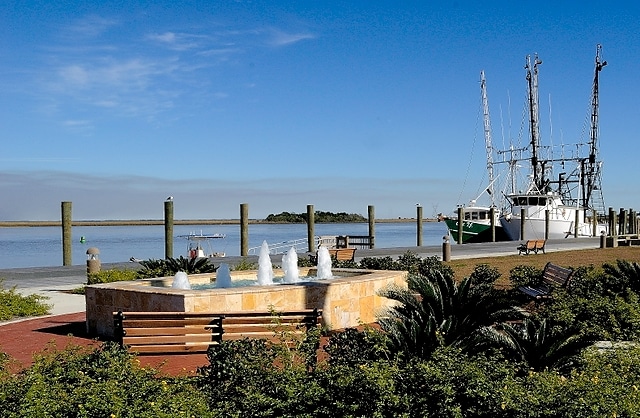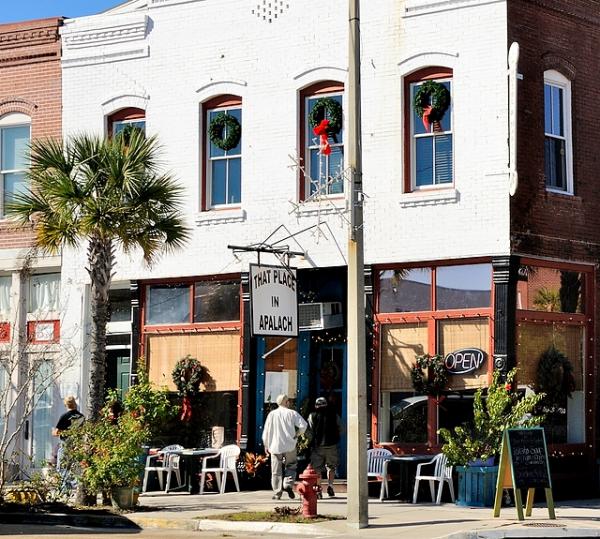
Cruising Apalachicola
If you like oysters, you’ll love Apalachicola. And if you like them raw, you’ll fit right in to this unvarnished waterman’s town, located in the heart of Florida’s Forgotten Coast. While Apalachicola is a little rough around the edges, it’s slowly joining the civilized world, and doing so while it preserves its maritime heritage and embraces new ways of life for its residents and visitors (see the complete photo gallery here).
I first discovered Apalachicola 10 years ago after cruising down the Tennessee-Tombigbee Waterway on my way from the Great Lakes to the Florida Keys. After experiencing the expected in Pensacola and Panama City, Apalachicola grabbed my attention with its combination of working-class roots and tasteful, gentrified newness. Indeed, it strikes a stark contrast to the all-too-typical world of Florida high-rises or the more forgotten towns of Steinhatchee, Yankeetown and Crystal River farther east on the Gulf Coast.
Situated at the confluence of the Apalachicola River, Apalachicola Bay and the Gulf of Mexico, the town has virtually endless cruising and fishing opportunities. Redfish, cobia, pompano, grouper, black drum and snapper are among the top catches. There are more than 20 charter boats and guides listed on the Chamber of Commerce’s website, and the choices range from light-tackle angling to deep-sea fishing, and from learning how to tong and cull your own oysters to plain old sightseeing.
Cruisers heading southeast to Florida’s popular west coast ports — Clearwater, St. Petersburg, Sarasota, Naples, etc. — will find Apalachicola an ideal stopover while waiting for good weather before heading into the Gulf of Mexico for the 150-mile run. Winter frontal systems and summer thunderstorms can make this passage a challenge, so you’ll usually find lots of company on the docks listening to weather reports.
The marinas here are plain and simple. If you’re looking for concierge service and dock hands with snappy uniforms, you’ve come to the wrong place. But if you want a decent slip, competent repair service and clean fuel, the handful of small marinas along the Apalachicola River or on Scipio Creek offer all the basics at reasonable prices (Scipio Creek Marina is out of the river’s strongest current, and it offers fuel, pump-out, transient slips, dry storage, repairs, a ship’s store and showers). I recently spent a pleasant few days at the Water Street Hotel and Marina while my new boat was being commissioned. The marina’s floating docks, river view, access to the hotel’s amenities and proximity to town made it a good choice. Most of the marinas here are subject to stiff river currents, so have your lines and fenders ready before docking. If you’re going to head up Scipio Creek, be especially cautious that you keep Junction Buoy “A” to starboard to avoid the long shoal that extends downriver.
While the town attracts vacationers of all stripes with its unique shops, galleries and restaurants, as well as the beautiful beaches and resorts on nearby St. George Island, boaters in particular will find the Junk-to-Treasures shop housed in the original Wefing’s Marine building and the Tin Shed fascinating. You could spend a day sifting through the nautical oddities and antiques in search of the perfect treasure for your home or boat.
A stroll through town will reveal an ongoing program of renovation, preservation and revitalization. Not far from empty, rundown commercial buildings, some of which are scheduled for a face-lift, are three attractive waterfront parks. Lafayette Park is in the center of Apalachicola’s historic district, where antebellum and Victorian homes dating from the 1830s have been lovingly restored to their original magnificence. New home construction tastefully fits into the historic scene. Battery Park, near the John Gorrie Bridge, is across from Municipal Marina and Boat Ramp and is home to the annual Florida Seafood Festival, a two-day event held in early November. And along Water Street, you can check out one of the shrimp boats docked at the city bulkhead while you sit and watch the action on the river.
Walking the commercial fishing docks at what is locally known as Mill Pond, one senses that the seafood business is struggling, thanks in large part to the BP oil spill. Although oil never reached Apalachicola Bay, the perception of oil-damaged oysters has devastated the local fisheries industry. While some local fishermen were hired by BP to help protect the waters, others suffered without alternatives from a severe drop in demand, which also had a domino effect on local packinghouses, distributors and the entire hospitality industry.

_ _
Casual cafes, family restaurants and oyster bars on the waterfront are part of the Apalachicola scene.
Little by little, though, the town is recovering. The world-famous Apalachicola oysters remain healthy and delicious. During my recent visit I witnessed busy tables at Papa Joe’s Oyster Bar and Boss Oyster, a steady stream of dinner patrons at Tamara’s Café and a full house at the historic Gibson Inn. The art galleries, antique shops and outfitter stores all seemed to be busy, and the marinas had only a few empty slips. Even more encouraging was hearing that my boat dealer, Wefing’s Marine, which specializes in Ranger Tugs and C-Dories, was selling boats again after having survived a disastrous one-year drought.
Apalachicola might be part of Florida’s Forgotten Coast, but its authentic waterman’s heritage — and a discerning nod to the future — make it an unforgettable stop along the Gulf Coast.








